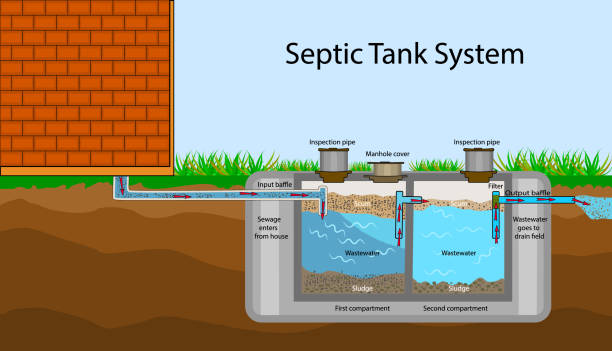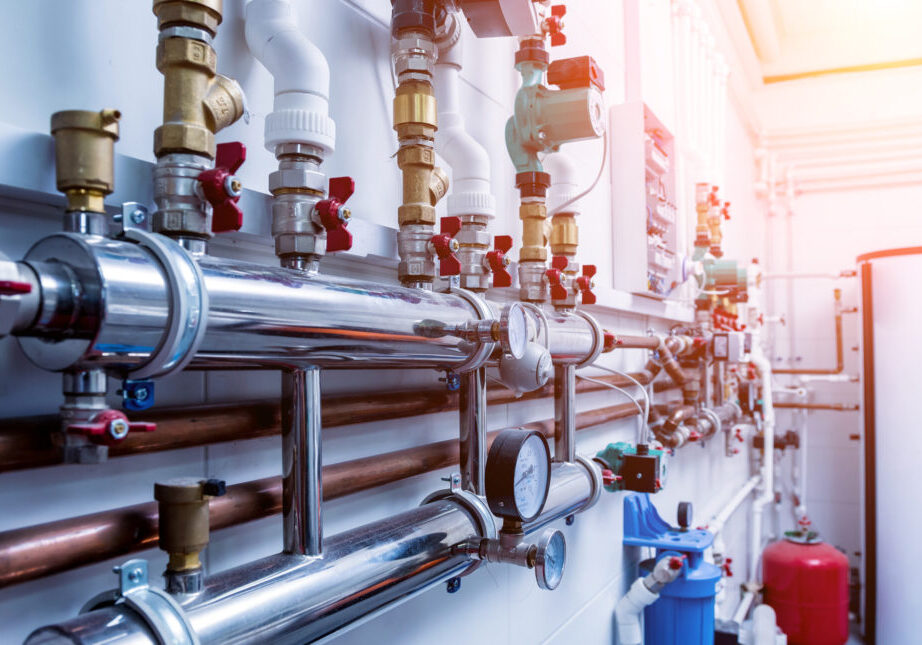Just about everyone seems to have his or her own rationale with regards to Plumbing Installation 101: All You Need to Know.

Understanding exactly how your home's plumbing system functions is important for every single house owner. From supplying clean water for alcohol consumption, food preparation, and bathing to securely removing wastewater, a properly maintained pipes system is crucial for your household's health and wellness and convenience. In this extensive overview, we'll explore the complex network that makes up your home's plumbing and deal tips on maintenance, upgrades, and managing typical concerns.
Introduction
Your home's plumbing system is greater than simply a network of pipelines; it's a complex system that guarantees you have access to tidy water and efficient wastewater elimination. Recognizing its elements and just how they work together can assist you stop pricey fixings and ensure whatever runs smoothly.
Standard Elements of a Pipes System
Pipes and Tubing
At the heart of your pipes system are the pipes and tubes that carry water throughout your home. These can be made from numerous materials such as copper, PVC, or PEX, each with its advantages in regards to durability and cost-effectiveness.
Fixtures: Sinks, Toilets, Showers, and so on.
Components like sinks, toilets, showers, and tubs are where water is made use of in your home. Understanding exactly how these components attach to the pipes system aids in detecting problems and planning upgrades.
Valves and Shut-off Points
Valves control the flow of water in your pipes system. Shut-off shutoffs are crucial during emergency situations or when you require to make fixings, allowing you to isolate parts of the system without interrupting water circulation to the whole residence.
Water Supply System
Main Water Line
The main water line links your home to the local water or an exclusive well. It's where water enters your home and is distributed to various fixtures.
Water Meter and Pressure Regulator
The water meter procedures your water use, while a stress regulatory authority makes certain that water moves at a secure stress throughout your home's plumbing system, avoiding damage to pipelines and components.
Cold Water vs. Warm water Lines
Comprehending the distinction in between cold water lines, which provide water straight from the primary, and warm water lines, which bring warmed water from the hot water heater, assists in fixing and preparing for upgrades.
Drainage System
Drain Piping and Traps
Drain pipelines bring wastewater away from sinks, showers, and commodes to the sewage system or sewage-disposal tank. Traps prevent drain gases from entering your home and likewise trap debris that could cause clogs.
Air flow Pipelines
Air flow pipes allow air right into the drain system, preventing suction that can slow down drainage and create catches to vacant. Correct air flow is vital for preserving the honesty of your pipes system.
Significance of Correct Drain
Making sure appropriate drainage prevents back-ups and water damages. Frequently cleaning drains and preserving traps can prevent costly fixings and prolong the life of your plumbing system.
Water Heating System
Sorts Of Hot Water Heater
Water heaters can be tankless or traditional tank-style. Tankless heating systems warmth water on demand, while containers keep heated water for prompt usage.
Upgrading Your Pipes System
Factors for Upgrading
Updating to water-efficient components or replacing old pipelines can enhance water top quality, decrease water costs, and enhance the worth of your home.
Modern Pipes Technologies and Their Benefits
Check out technologies like clever leak detectors, water-saving toilets, and energy-efficient hot water heater that can save cash and decrease ecological impact.
Expense Factors To Consider and ROI
Determine the ahead of time costs versus long-lasting financial savings when thinking about plumbing upgrades. Lots of upgrades pay for themselves via reduced energy bills and less repair work.
Just How Water Heaters Link to the Pipes System
Recognizing how water heaters attach to both the cold water supply and hot water distribution lines aids in detecting issues like insufficient warm water or leakages.
Maintenance Tips for Water Heaters
Consistently flushing your hot water heater to remove debris, checking the temperature setups, and evaluating for leaks can extend its life expectancy and boost power efficiency.
Typical Pipes Problems
Leakages and Their Reasons
Leaks can happen as a result of aging pipelines, loosened fittings, or high water stress. Attending to leakages promptly prevents water damage and mold development.
Obstructions and Clogs
Clogs in drains and commodes are often triggered by purging non-flushable items or a buildup of oil and hair. Making use of drain screens and being mindful of what decreases your drains can stop blockages.
Indications of Pipes Troubles to Expect
Low tide stress, slow-moving drains pipes, foul odors, or abnormally high water costs are signs of prospective plumbing troubles that need to be resolved promptly.
Plumbing Maintenance Tips
Routine Assessments and Checks
Set up annual pipes examinations to capture concerns early. Look for signs of leaks, rust, or mineral accumulation in taps and showerheads.
Do It Yourself Upkeep Tasks
Straightforward tasks like cleaning faucet aerators, checking for bathroom leakages making use of color tablet computers, or shielding revealed pipelines in cool environments can prevent major plumbing issues.
When to Call a Specialist Plumber
Know when a plumbing issue requires professional proficiency. Attempting complex repairs without appropriate understanding can cause even more damage and higher repair work costs.
Tips for Reducing Water Use
Easy practices like repairing leaks promptly, taking much shorter showers, and running complete lots of washing and meals can save water and lower your utility bills.
Eco-Friendly Pipes Options
Take into consideration lasting plumbing materials like bamboo for flooring, which is durable and green, or recycled glass for counter tops.
Emergency Preparedness
Steps to Take Throughout a Pipes Emergency
Know where your shut-off valves lie and exactly how to turn off the water supply in case of a ruptured pipeline or major leak.
Relevance of Having Emergency Situation Get In Touches With Useful
Keep call info for local plumbers or emergency situation services conveniently offered for quick feedback during a plumbing dilemma.
Environmental Influence and Preservation
Water-Saving Fixtures and Devices
Setting up low-flow faucets, showerheads, and commodes can substantially reduce water use without compromising efficiency.
DIY Emergency Fixes (When Suitable).
Temporary repairs like using air duct tape to patch a dripping pipe or positioning a container under a dripping tap can reduce damages up until a professional plumbing technician arrives.
Verdict.
Comprehending the makeup of your home's plumbing system encourages you to preserve it effectively, conserving time and money on repair services. By following routine maintenance regimens and remaining notified regarding modern plumbing innovations, you can ensure your plumbing system runs efficiently for several years to come.
Understanding Your Home Plumbing System: A Comprehensive Guide
Plumbing System: The Lifeline of Your Home
At its core, the plumbing system is designed to perform two primary functions: bring fresh water into your home and remove wastewater. The system is a network of pipes, fixtures, and other components that transport water and sewage. Residential plumbing systems include potable water supply lines, drain-waste-vent (DWV) systems, and various plumbing fixtures that make water use in daily tasks possible.
Key Components:
Water Supply: This part of your plumbing system brings municipal water into your home, passing through the main water supply line. It s responsible for supplying all water needs, from drinking to bathing.
Drainage System: It carries waste and water away from your home to the sewer or septic system. This system includes all the piping within your home that leads to external sewage or septic systems.
Vent System: An essential yet often overlooked component, the vent system allows sewer gases to escape and lets air into the drainpipes, ensuring water and waste move correctly through the system.
Fixture: More Than Just Taps and Toilets
Plumbing fixtures are the most interactive parts of the plumbing system, including faucets, showers, toilets, and sinks. Each fixture is connected to the plumbing system and plays a role in either the delivery of freshwater or the disposal of waste and wastewater.
Types of Fixtures:
Faucets and Sinks: Used for washing hands, dishes, and other daily water needs. Toilets: Dispose of human waste through the sewage system. Bathtubs and Showers: Provide bathing facilities, requiring both hot and cold water supply. Water Supply: The Source of Life
The water supply system is a critical component, ensuring that potable water is available throughout your home for various uses, including drinking, cooking, and cleaning. This system consists of pipes that distribute water to different parts of the house, controlled by valves to regulate the water flow.
Types of Plumbing: Materials and Methods
Various types of plumbing systems and materials are used in residential settings, each with its advantages and applications. From copper and PVC pipes for water supply to cast iron and ABS for drainage, the choice of materials can impact the longevity and efficiency of your plumbing system.
https://intownplumbingtx.com/articles/home-plumbing-system-guide/

We were made aware of that report on from a good friend on another blog. Liked our content? Please quickly share it. Help someone else locate it. Thank you so much for your time spent reading it.
This Website